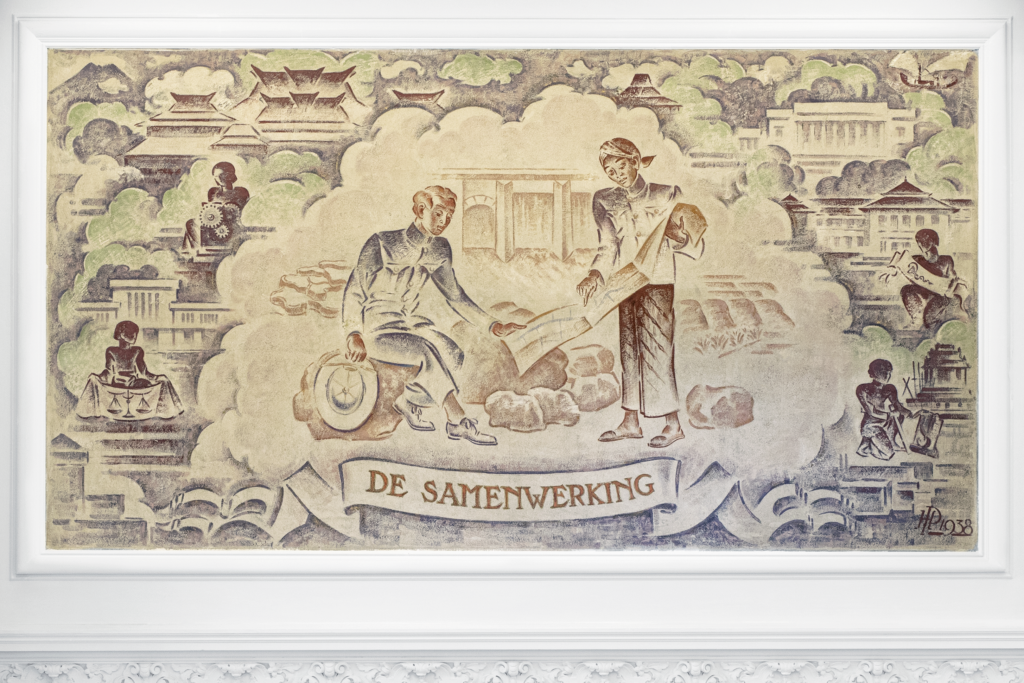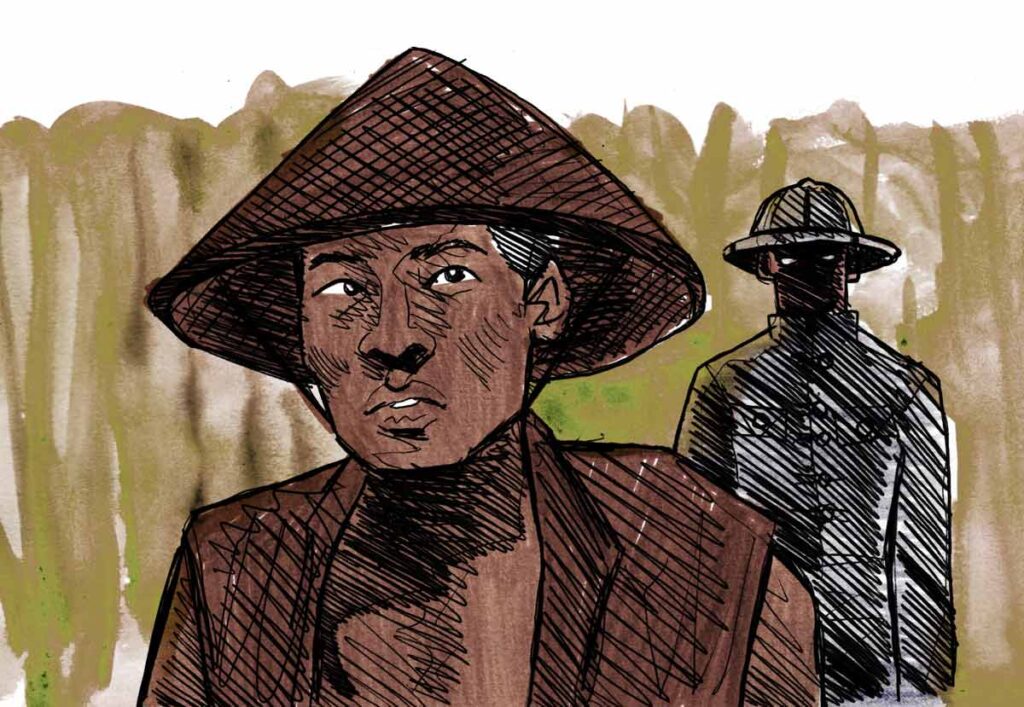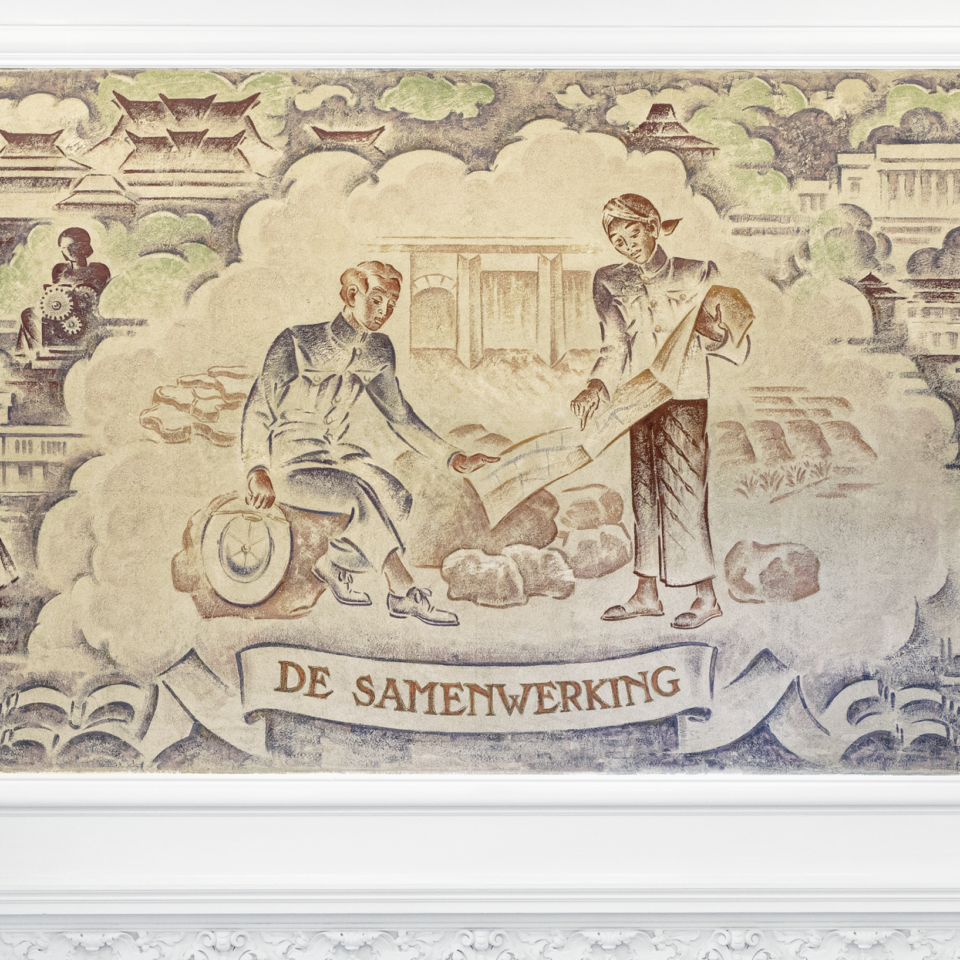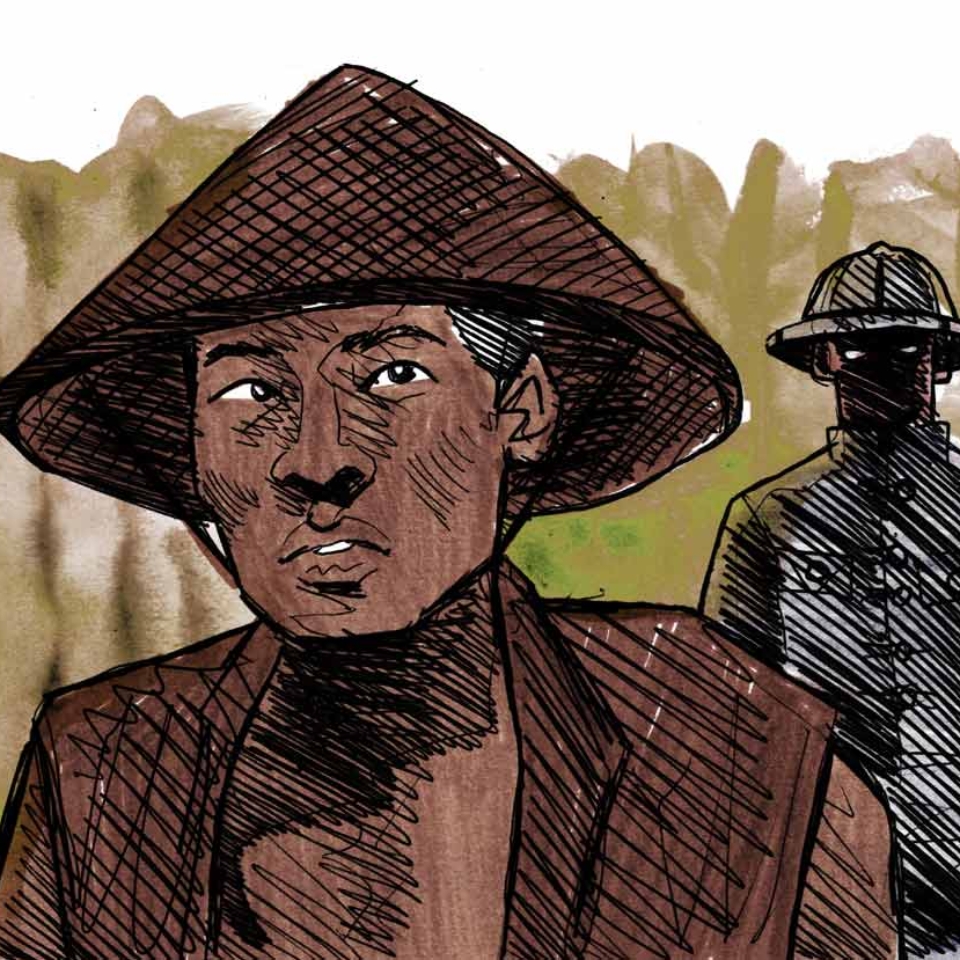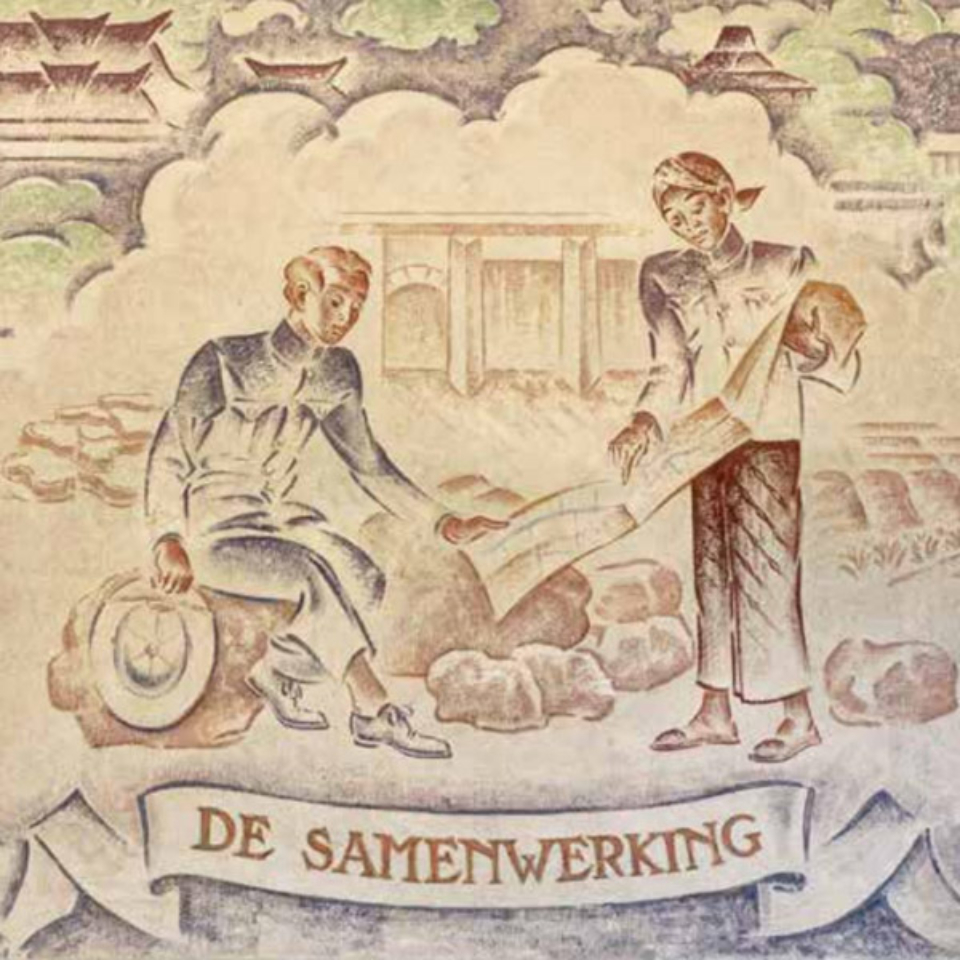‘The West’ is pictured to the far left, with steamships, impressive bridges and dynamic factories. ‘The East’ in the center shows a farmer ploughing with his water buffalo, along with traditional crafts and activities. Modernity is juxtaposed with tradition. The scene to the right is ‘The Collaboration’, with a man in colonial uniform and his companion in traditional Javanese garb studying an irrigation plan together. The surrounding imagery references education, trade and industry. For example, the Technische Hogeschool Bandung (Technical Institute of Applied Sciences), founded in 1920, is shown at the top left and STOVIA, a medical school for native Indonesians, at the centre-right.
Economics, trade and industry contrast with nature, agriculture and craft. The triptych implies that collaboration between these two worlds will achieve progress and modernity – as long as ‘The West’ leads the way. Arguably, the depictions of education, trade and industry refer to the Koloniaal Instituut’s activities and the knowledge that the West purported to impart to the traditional, agrarian East.
Hendrik Paulides’ work presents these as self-evident truths, and does not acknowledge that this supposed modernity was part of the system of suppression, exploitation and inequality. To resolve the moral ‘issues’, the Dutch government invoked the ethical policy and its concept of improvement. In this way, it justified its colonial policy, compensating for its profits with the promise of ‘elevating’ the population to meet ‘Western’ standards.
